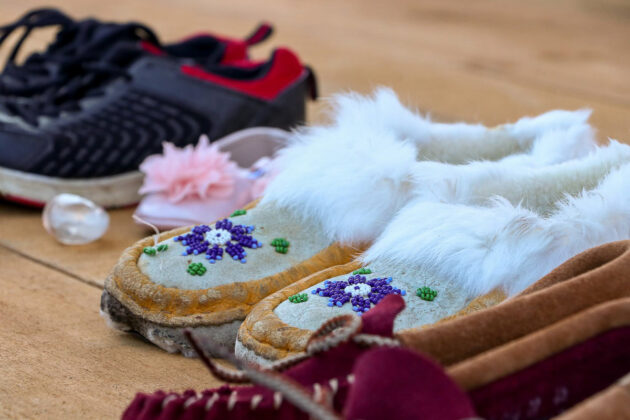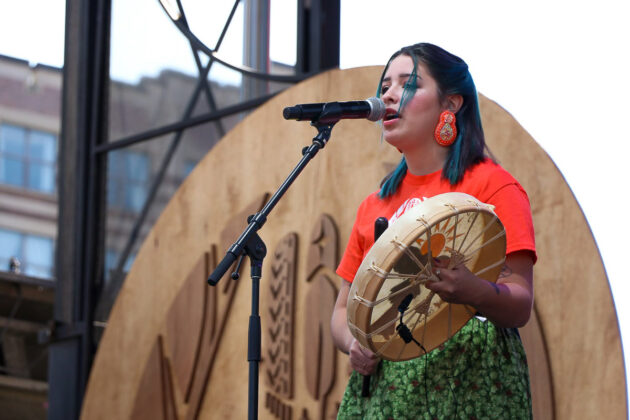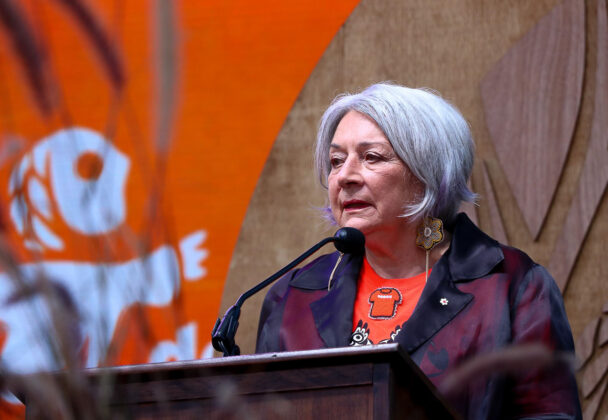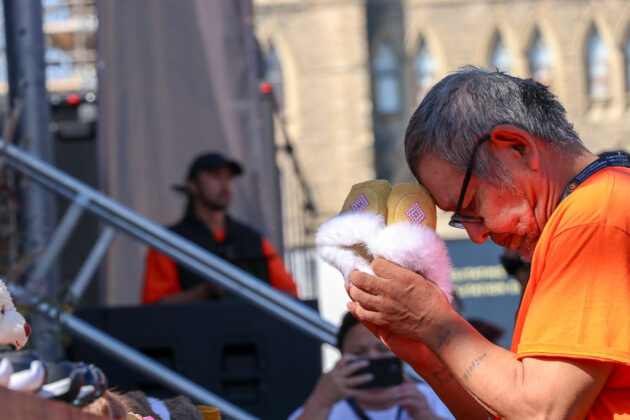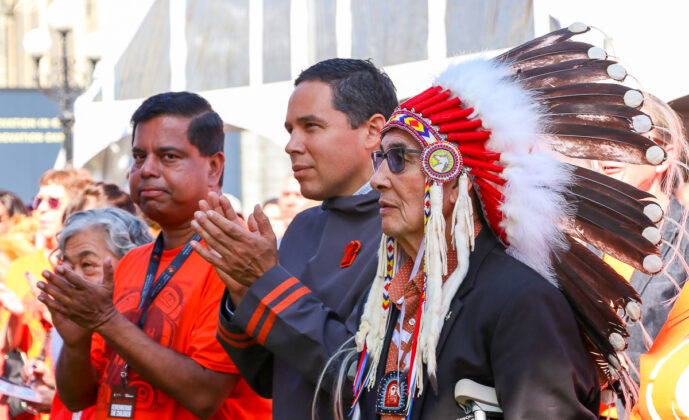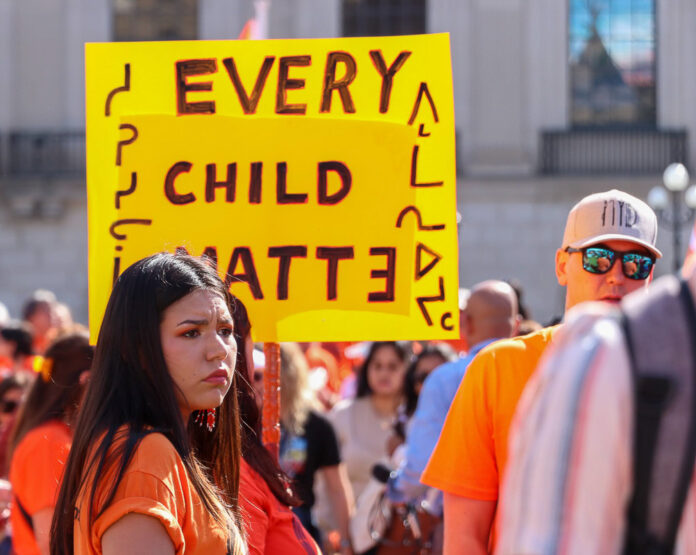
Parliament Hill was transformed on Sept. 30 from its traditional image as a vibrantly coloured crowd wearing orange shirts gathered for National Day for Truth and Reconciliation.
The third annual NDTR event drew hundreds of people on Parliament Hill for Remembering the Children, an event co-hosted and broadcasted by the National Centre for Truth and Reconciliation and the Aboriginal Peoples Television Network.
The National Day for Truth and Reconciliation originated as Orange Shirt Day in 2013, inspired by residential school survivor Phyllis (Jack) Webstad.
Guest speakers at the event included Canada’s first Indigenous Governor General Mary Simon, former commissioner for the Truth and Reconciliation Commission of Canada Wilton ‘Willie’ Littlechild, the University of Ottawa’s first Indigenous chancellor Claudette Commanda and Levinia Nuqaalaq Brown, former Member of the Legislative Assembly of Rankin Inlet South/Whale Cove.
In her address, Simon said reconciliation is a complex issue that requires respect.
“The unmarked graves of the children woke this country up. Reconciliation is complex. Survivors have their own experiences and need to heal in their own time. There are many levels of work that [are] required,” Simon said. “Reconciliation is a way of saving and living life. It is about being intentional about how we interact with one another, how we show respect.”
Madeleine Allakariallak and Charles Bender emceed the event, alongside intermittent performances by Eagle River Singers, Eddie Cote, Ry Moran, Willows, Emma Stevens, Aysanabee and Terry Uyarak.
Residential school survivor and event attendee Daryl Angus said that for him, truth and reconciliation are about collective healing for the entire nation.
“As a country, we need to heal together, and [this event] is just the beginning,” Angus told the Charlatan. “It’s a sad day for many of us, myself [included], because I went to an Indian residential school. But [today] shows me resilience in spite of the adversities we’ve experienced, the traumas and intergenerational traumas, we’re still here. Indigenous children [and] youth, they are our future.”
Crowd member Patti Sweet echoed Angus’s sentiments.
“[I’m reflecting on] my mom. She was a residential school survivor,” she said. “We’re still here. [the government] tried to get rid of us but we’re still here.”
Emotions moved through the crowd as a red banner printed with the Memorial Register made its way onto the front stage. The banner, made by the National Centre for Truth and Reconciliation, honours and remembers the children lost to residential schools across Canada.
Simon said reconciliation allows people to come together and learn. “[Reconciliation is] a time to get to know each other. It’s a time to tell our stories. A time to exchange and tell each other who we are so that, in the end, we will learn as people of this country to be the type of people we want to be,” Simon said.
Featured image by Anya Swettenham.



